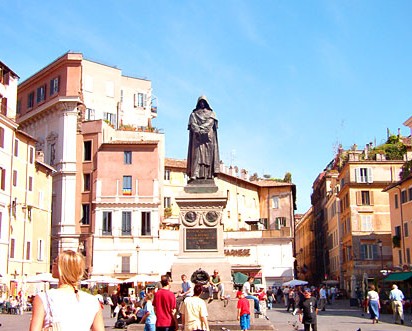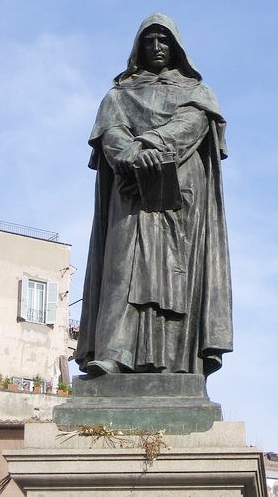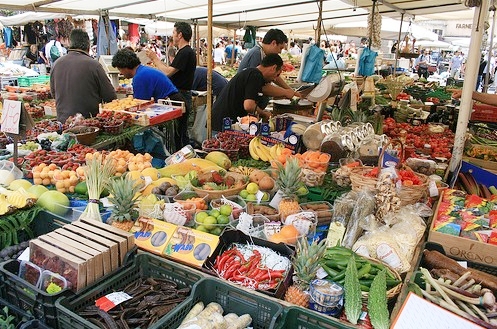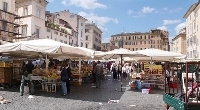Campo de Fiori, RomeCampo de Fiori, RomeAfter fast-paced tours of museums and historical sites, many people will enjoy heading to one of Rome’s Campo de Fioro for a fun yet relaxing morning. This piazza is home to many flower and vegetable stalls, as well as bars and restaurants. Here, one can enjoy a leisurely meal, shop, or visit the piazza’s share of architectural treasures. Though the Campo de Fiori is a busy place, it is was once a quiet meadow—until it became a stage for executing the victims of the Inquisition, including Giordano Bruno (whose statue stands guard at the piazza’s center). In more peaceful times it became a place of commerce. In fact, the streets honor the many craftsmen who once plied their trade there: Via dei Cappellari (hatters), Via dei Baullari (trunk makers) and Via dei Chiavari (key makers).  Take the Via dei Giubbonari (jacket makers) at the southern end of the piazza to visit the beautiful church, Chiesa di San Carlo ai Catinari. Constructed in the 17th century, it was one of the masterpieces of Rosato Rasati. The Church is known for its altar pieces, which were crafted by great artists like Pietro da Cortona and Giovanni Lanfranco. Visiting hours are 7:30 a.m to noon, and then 4:30 p.m. to 7 p.m. At the northern side of Campo de Fiori is the Piazza della Cancelleria. Here guests can find a charming Renaissance palace, Palazzo della Cancelleria, which dates back to the 15th century. Experts believe that the interior courtyard—easily its strongest feature—was designed by Bramante. Archaeologists and historians have also discovered on the grounds the ruins of a very important early church, the Basilica di San Lorenzo in Damaso.  Another attraction here is the Piccolo Farnesina. Once a residence of a French clergyman, it has since been converted into a museum. Exhibits include ancient Greek, Roman, Assyrian and Egyptian sculpture and archaeological finds, donated by Senator Giovanni Barracco in 1902. Those who visit the museum should request access to the ruins underneath it—an ancient Roman fish shop. Across it is the Museo di Roma which showcases how Roman life has evolved from the Middle Ages to today. It also has many artwork and architectural features rescued from demolished historical buildings.  At the east is the Chiesa di Sant’Andrea della Valle, a fine example of baroque architecture constructed in the 17th century. Designed by Carlo Maderno, it features a beautiful fresco done by Giovanni Lanfranco and Domenichino. 
|